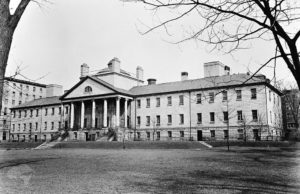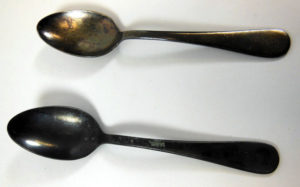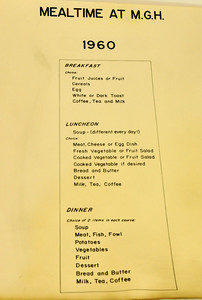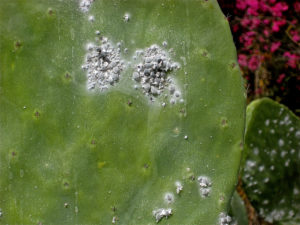
Massachusetts General Hospital: Bulfinch Building, 1941
By Tegan Kehoe (Guest Contributor)
One of the quirks of being a medical museum is that some of our most interesting stories are ones we are very glad not to be able to tell with artifacts. In 1966 a mysterious outbreak of Salmonella took place at Massachusetts General Hospital. Salmonella is not uncommon, but this particular type, Salmonella cubana, is rare. Some of the patients seemed to have contracted the bacterial infection while at the hospital. David Lang, a pediatrician, was determined to find the cause and stop the spread of the outbreak.
The first five cases were all in the same building, which suggested that there was a common source. However, a few weeks after Lang started investigating, S. cubana infections started showing up in completely different places in the hospital. Lang searched for a common factor. At the time each clinical building at the hospital had its own kitchen, so at first Lang didn’t think to look at the food, but then he learned that there was a special-diet kitchen that served all of the buildings.

From the hospital’s collection: cafeteria spoons.
Pictured are a few items from our collection related to nutrition and food services in the 1960s: two MGH cafeteria spoons and a sample 1960 menu. While almost all of the S. cubana patients had been on special diets at one point or other, rigorous testing determined that the kitchen wasn’t the source of the outbreak.
Lang stumbled on the answer in part because of an MGH tradition: Every December, for a grand rounds presentation, surgical residents create a fictional medical case and make up a chart for Santa Claus. Often he is hospitalized suffering from a host of holiday-related ailments – candy-cane scented urine and broken ribs caused by reindeer games are two that come to mind. Regardless of his condition, Santa always recovers and is sent home just in time for his Christmas Eve duties.

A 1960 Mass General menu.
A lab technician remembered that the previous Christmas she had found bacteria that might have been S. cubana in Mr. S. Claus’s urine sample. It wasn’t real urine, and the pranksters who created it and a blood sample gave Lang their recipe – nothing in the urine concoction pointed to Salmonella. Months later, Lang was poring over the records of a young patient with S. cubana and he noticed the boy had been given a test using carmine dye. Lang didn’t know much about carmine, but he knew that it had been in Santa Claus’s blood sample. What if the two fake samples had been mixed up? He soon learned that carmine dye is made from the cochineal beetle, which could easily become contaminated with Salmonella when it is harvested.

Cochineal on a cactus. Credit: Ina Widegren.
Lang couldn’t tell whether all of the sick patients had been exposed to carmine – it was the kind of test that didn’t show up in a patient’s file unless it had unusual results. He tested the carmine dye itself, and found S. cubana. In partnership with the CDC, MGH doctors determined they could continue using carmine safely if it was heat sterilized in processing.
Many mystery outbreaks are never solved. It’s possible that without Santa Claus, this one would not have been solved either.
Tegan Kehoe is the exhibit and education specialist at the Paul S. Russell, MD Museum of Medical History and Innovation at Massachusetts General Hospital.
This post was first published in April 2016.
